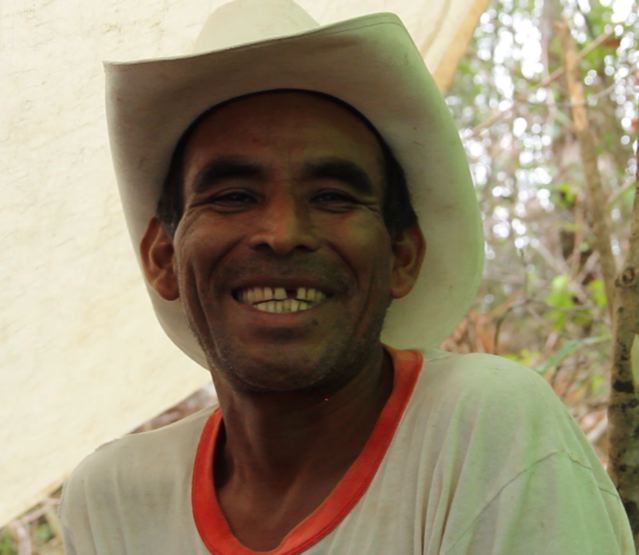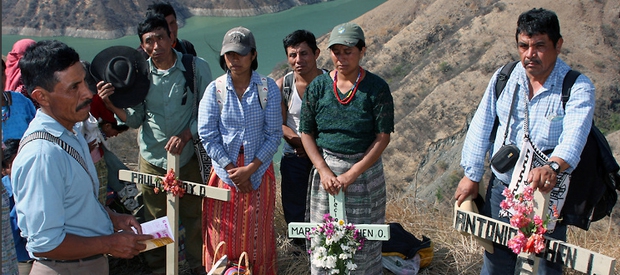By: Sarah Bardeen, former Communications Director
In Sudan last week, dozens of peaceful protesters were injured when Sudanese police used force to break up a protest against the Kajbar and Dal dams.
For some, it was deja vu – a painful echo of 2006-07, when Sudanese security forces took the lives of at least seven people who were opposing the Merowe and Kajbar dams.
For others, the protests in Sudan reminded of a stark truth that’s seldom talked about: opposing a dam project can get you killed.
We all know it. And it’s true around the world, not just in Sudan.
A few days ago, we received notice that Goldman Award winner Berta Caceres and 200 members of communities impacted by the Agua Zarca Dam in Honduras were harassed by dam supporters during a protest.
After the action, the protesters – including women and children – were taken off of buses by military and police, and the buses were impounded. The protesters were forced to walk five hours through areas with a heavy paramilitary presence.
Though they were accompanied by a group of approximately 25 Witness for Peace volunteers, there is still significant concern for their safety. In 2013, another member of the movement, Tomás Garcia, was shot and killed for opposing the Agua Zarca Dam. His son was injured.Where Dams Go, Oppression Follows
What’s happening in Honduras and Sudan is part of a larger pattern of violence and intimidation that follows the development of large dams.
And it turns out that there’s no single way to risk your life when a dam project comes along.
It could happen if you attend a protest, in Pakistan or India or Honduras, where police may beat you up, or open fire on you.
Or perhaps you’re walking home from the supermarket, like 53-year-old Raimundo Nonato do Carmo, who fought for his people’s rights in the wake of Brazil’s Tucuruí Dam. He was shot seven times by two men on a motorcycle as he stepped out of the store.
Perhaps you’re a member of an indigenous group that’s already suffered decades of repression, like Raul Lucas and Manuel Ponce, who were slain on February 13, 2009 for their opposition to La Parota Dam in Acapulco.
You could even be an American nun, like Dorothy Stang, who was shot at point blank range for defending the rights of poor farmers in the Amazon.Group graves for massacre victims in Guatemala.Jaime Rodriguez
Or, as in the case of the women and children who lived in the path of Chixoy Dam, you may have done absolutely nothing at all.
The truth is that once you start digging, the names come thick and fast, and there is a river of tears following their wake: Kimy Pernia Domico. Alonso Maria Jarupia Domico. Lucindo Domico Cabrera. Tomás Garcia. Onesimo Rodriguez. Remy Fraisse. The list goes on and on.

Even those who are supposed to benefit from a project can get hurt. In Lesotho, five construction workers for the Lesotho Highland Water Project were shot dead for daring to strike for better pay and fair working conditions.
A Matter of Life or Death
It’s no coincidence that repression comes along with big dams. The biggest and most destructive dams are built by authoritarian governments, who often see them as a potent symbol of nation-building.
Most people in functioning democracies would not consent to the dislocation of tens of thousands of people for a dam. But in a country where human rights aren’t respected, these projects come up and they get implemented, regardless of the human cost of development.
In the 21st century, the pace and scale of repression only seems to be increasing, as governments, corporations and ordinary citizens clash fiercely over precious remaining resources.
In 2012, Global Witness found a sharp rise in deaths of activists, journalists and community members who were defending their rights to land. Over 700 environmental defenders were killed in the period between 2002 and 2011.
The true numbers may be much higher, however. We suffer from a lack of information, and Global Witness cautions that its figures may be a “gross underestimate” of the number of killings.
As a new wave of protests rises in Sudan, Honduras and elsewhere, we must not forget all the people who’ve given their lives in this struggle. And we must remember – and support – all the courageous people who continue to fight for their rights despite very real threats to life and liberty.
The memory of Tomás, Kimy, Alonso, Dorothy, Raimundo and so many others demands nothing less.
Featured image: Group graves for massacre victims in Guatemala | Photo by Jaime Rodriguez

